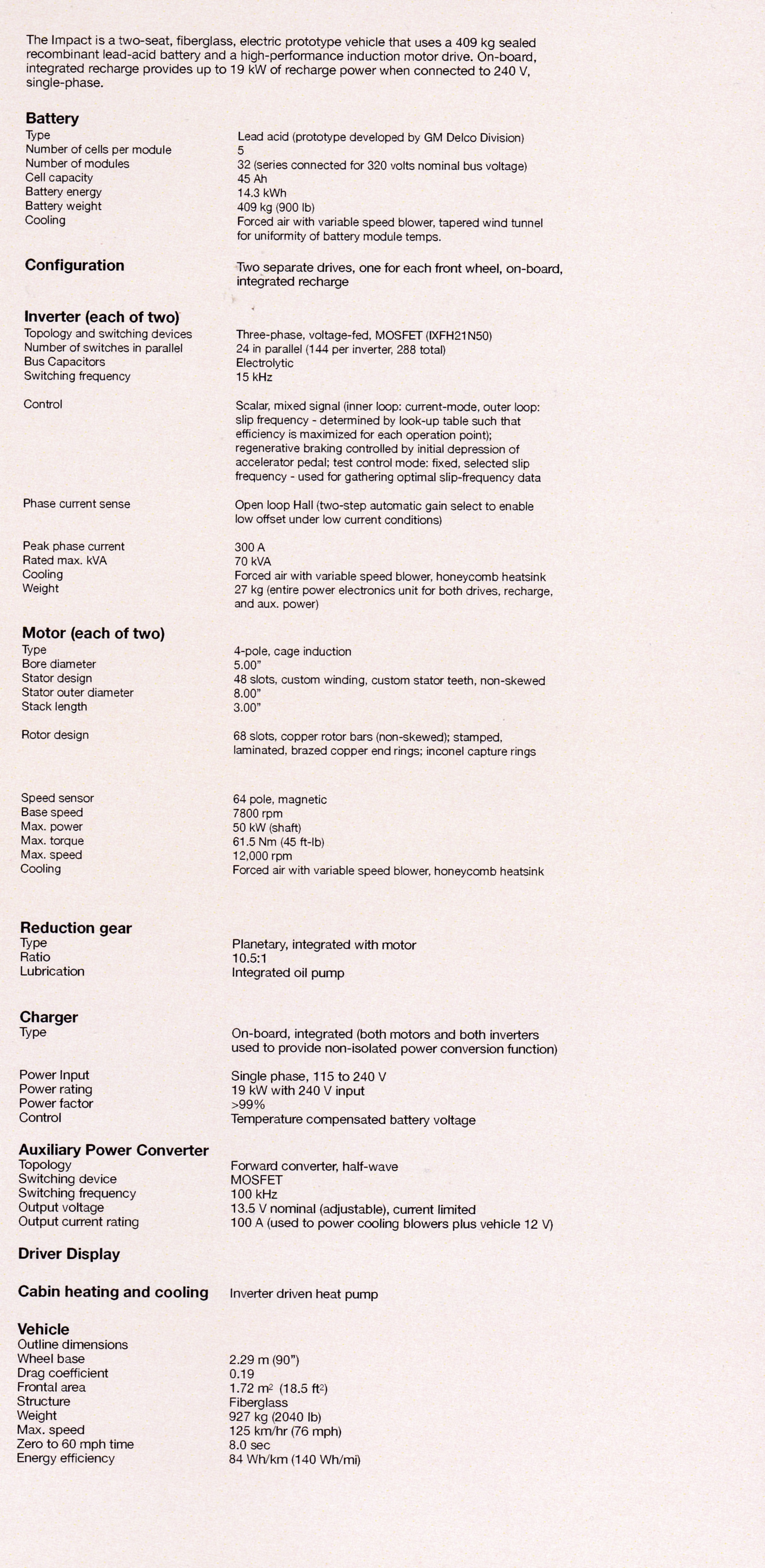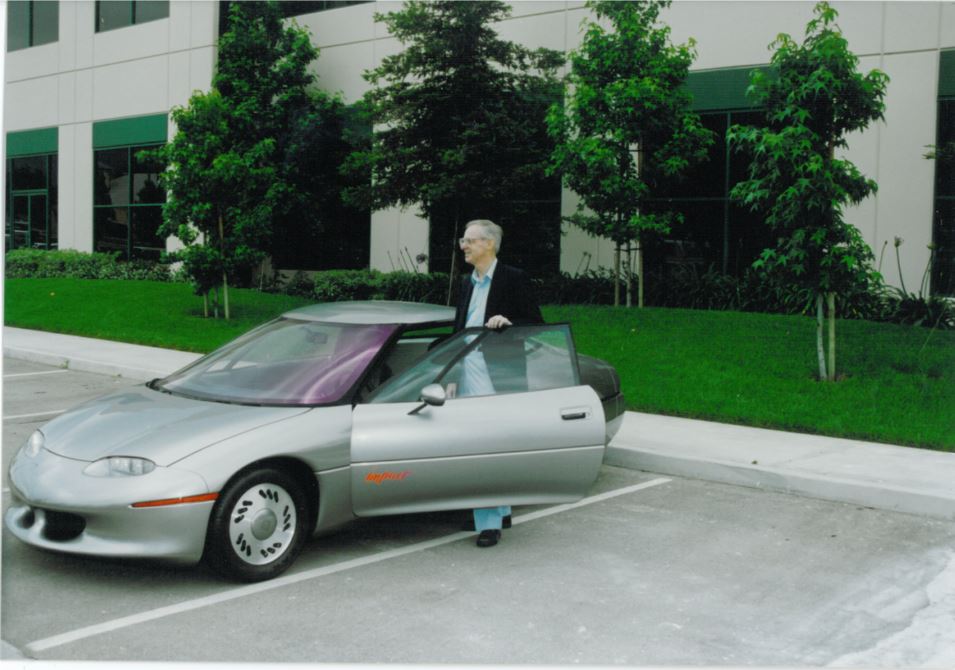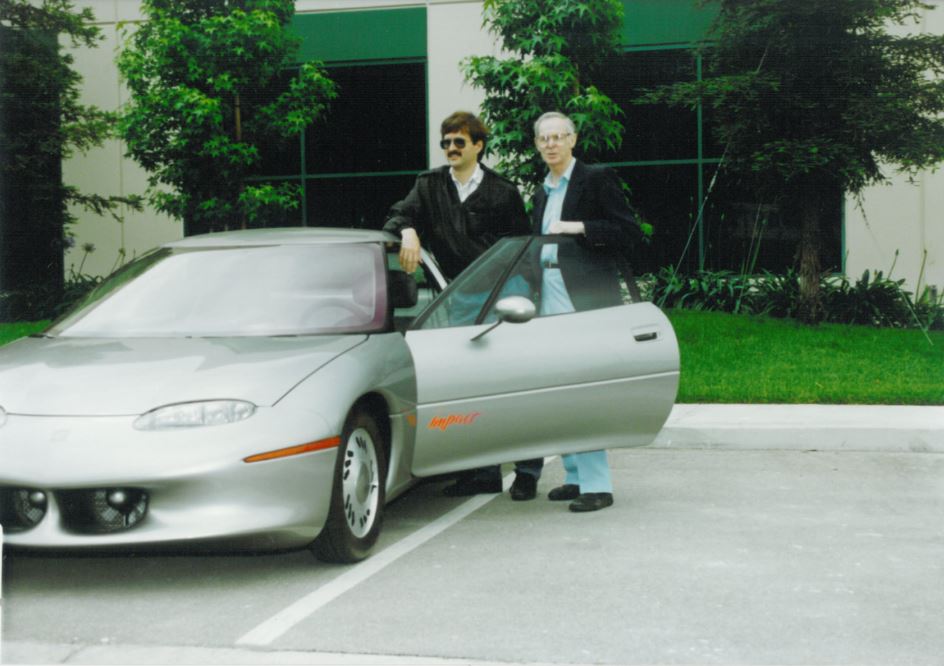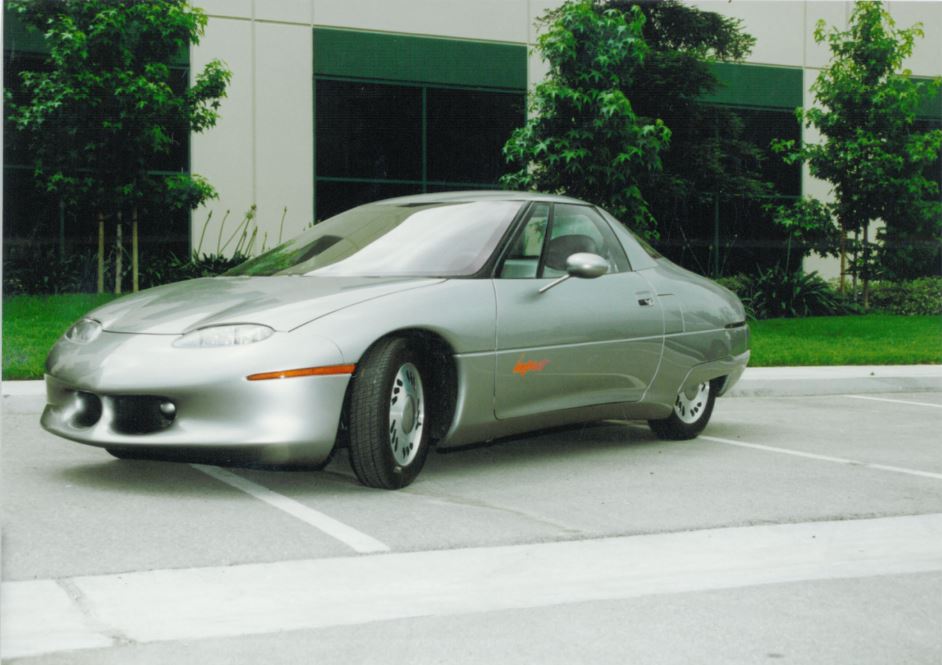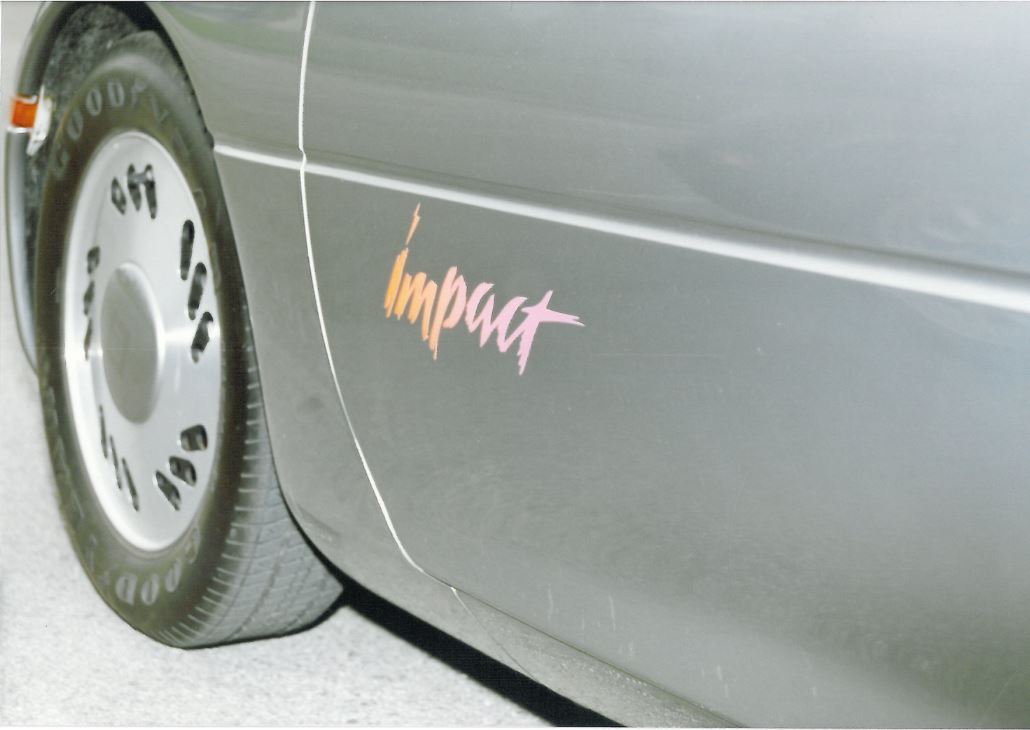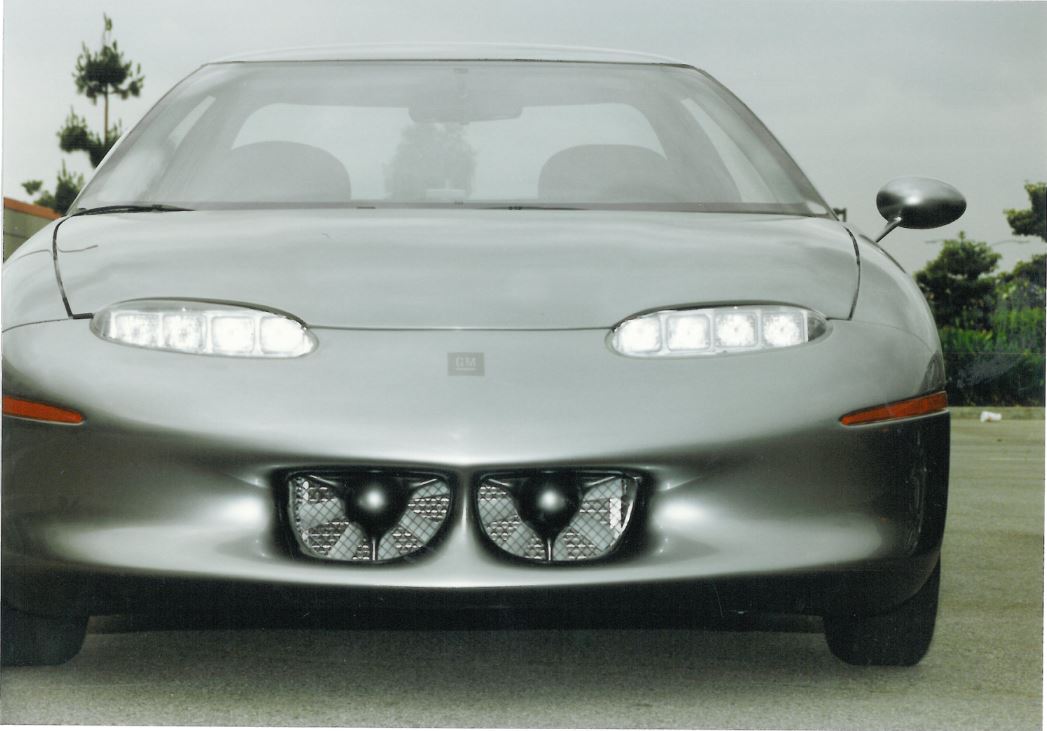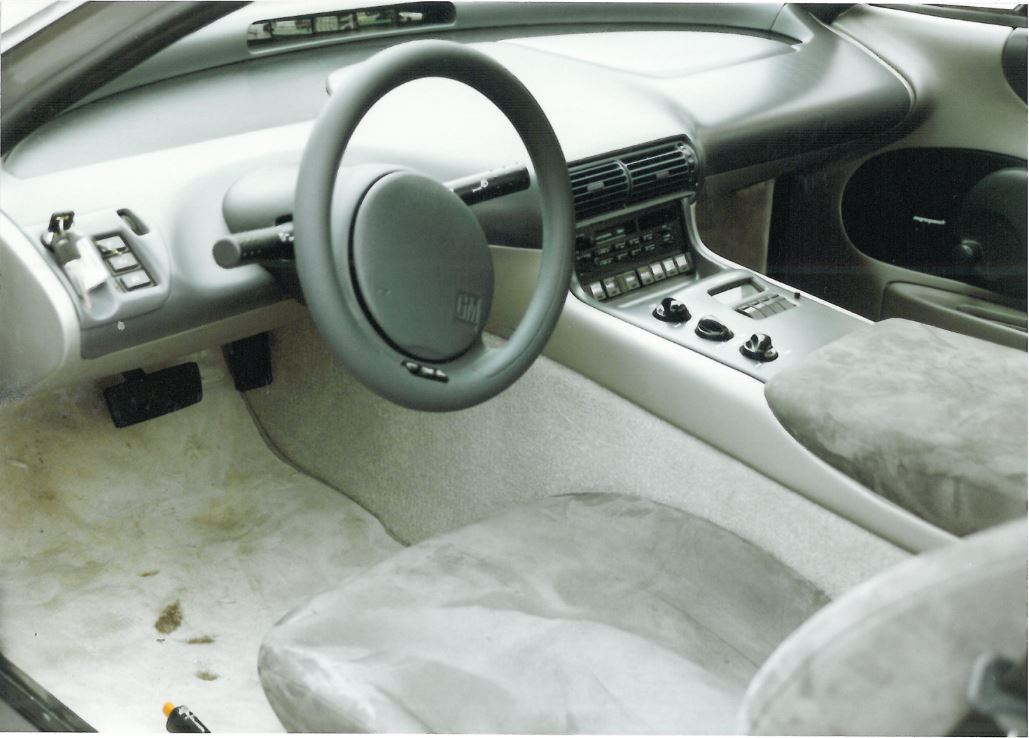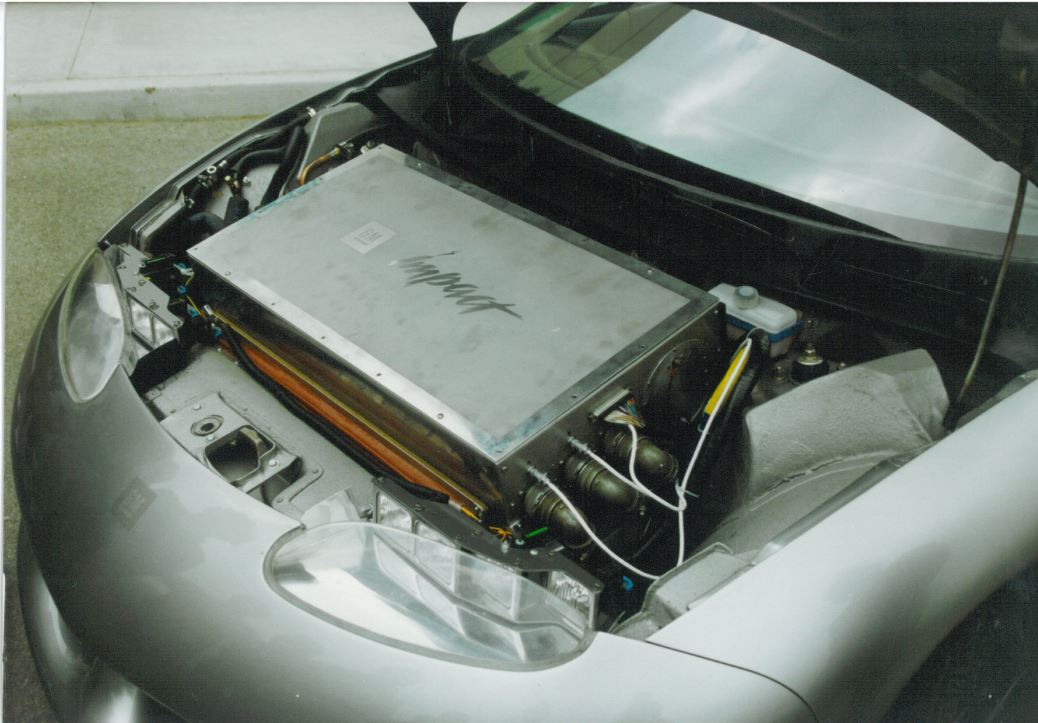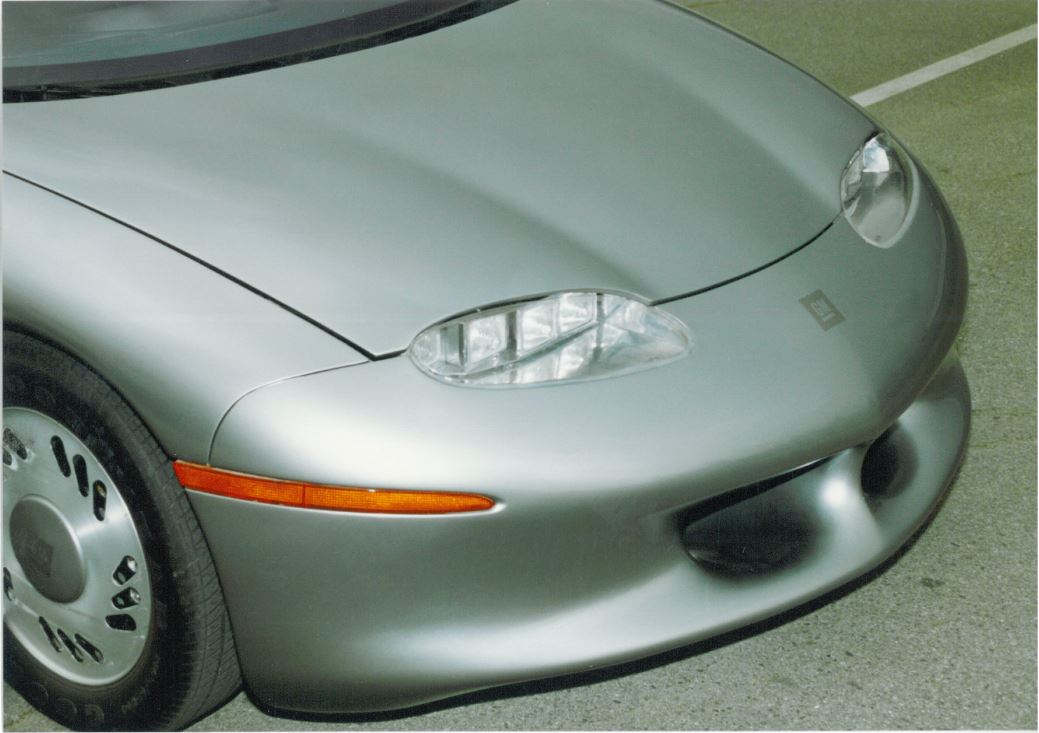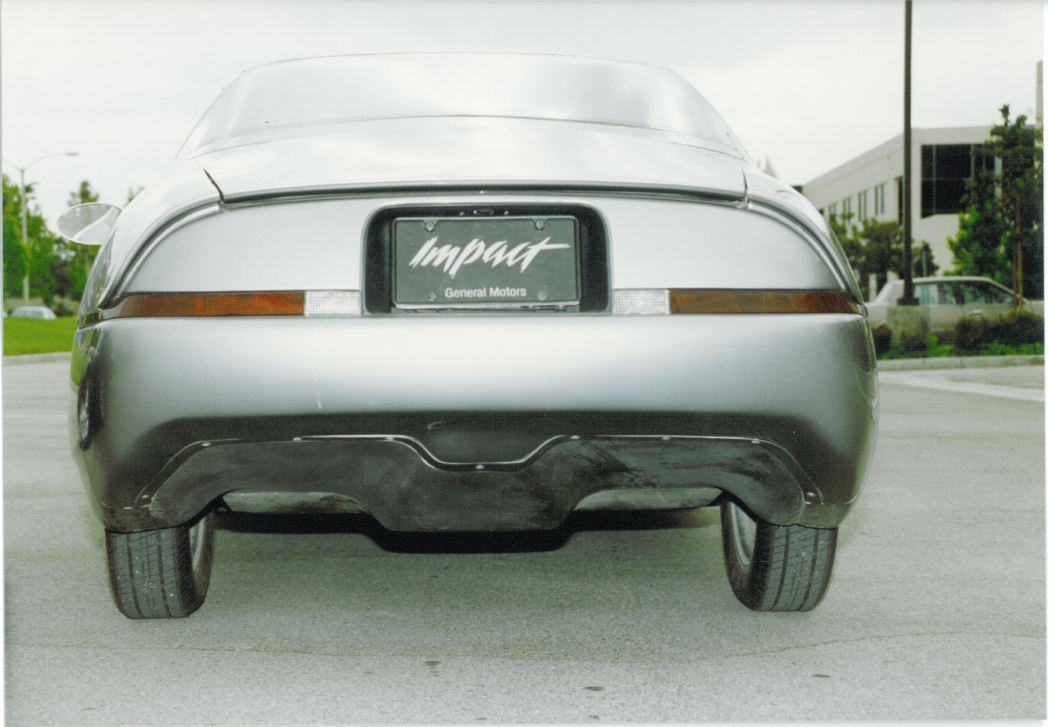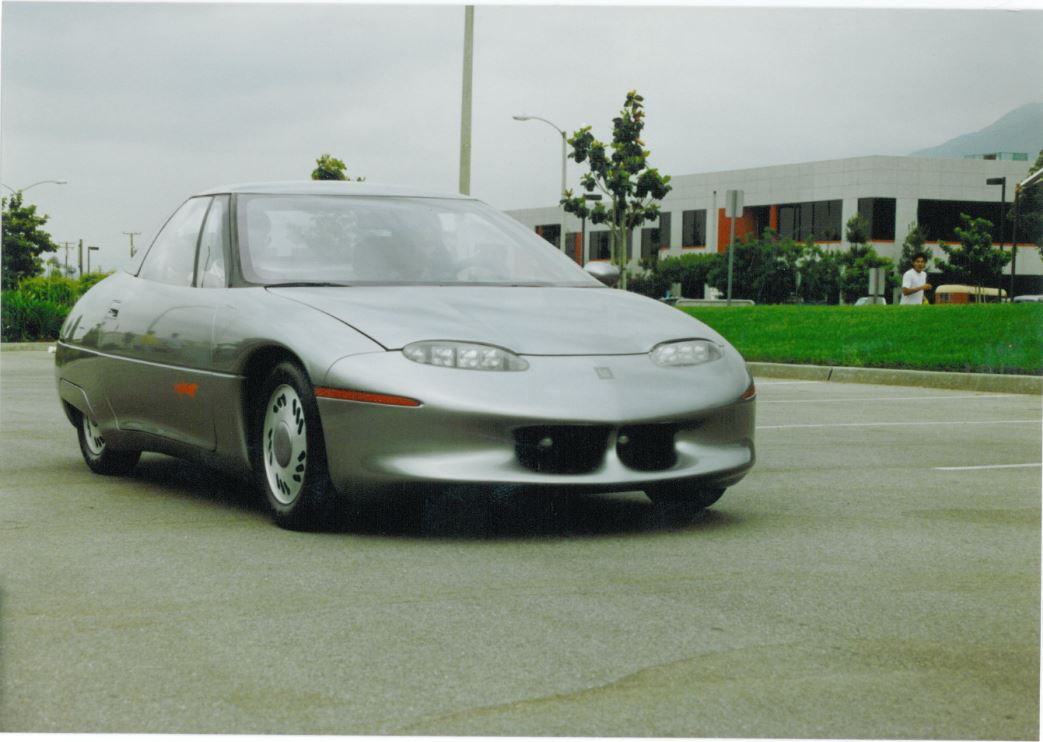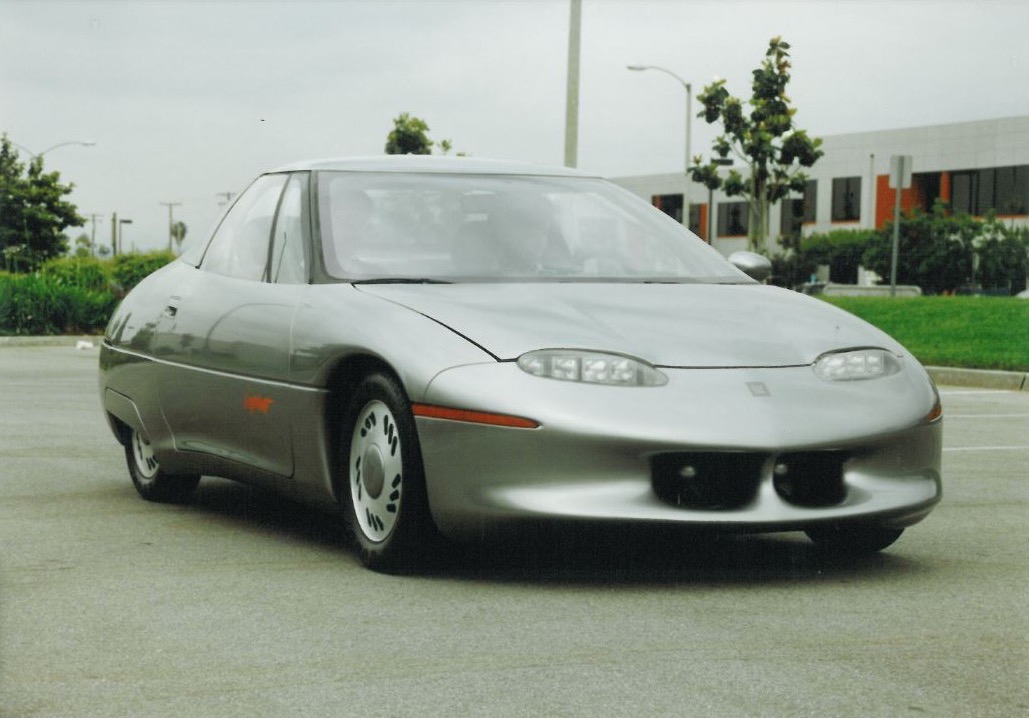
1989 'Impact' Prototype OEM EV
Prototype
---> AeroVironment <---
===
Vehicle Description
Impact development and history
(Caltech Engineering Lecture Series)
During the early 1980s, JPL engineers Wally Rippel
(Caltech BS ’68) and Dean Edwards (Caltech PhD ’77) developed
electric propulsion theory and hardware, which indicated
that an electric car could be built with at-hand technology. This
car would have a range in excess of 100 miles, accelerate from
zero to sixty in less than ten seconds, and achieve an 80%
recharge in less than 45 minutes with an integrate
onboard charger. The enabling elements were a custom induction
motor-inverter combination developed by Rippel and an
upgraded lead-acid battery developed by Edwards.
In July of 1985, Rippel and Edwards met with Paul MacCready
(Caltech PhD ’52), President of AeroVironment (AV). They discussed
the possibility of JPL and AV collaborating to design and
fabricate a prototype EV incorporating a drive system developed
by JPL with an aerodynamic, lightweight two-seat vehicle
developed by AV. As a result of this meeting, MacCread wrote
a proposal using documented inputs from Rippel and
Edwards for the development of a demonstrator
EV called “Electrospirit.”
In August of 1985, MacCready submitted this proposal to the
General Motors Advanced Concepts Center. The proposal was
not funded.
In January of 1988, about two months after the SunRaycer victory
in Australia, MacCready asked Alec Brooks (Caltech PhD ’81)
to organize a meeting at AV to discuss what kind of EV project AV
could propose to GM, “now that the iron was hot.” Consultants
Wally Rippel and Alan Cocconi (Caltech BS ’80) attended
the meeting. MacCready suggested that AV propose a
“bread and butter vehicle” such as an electric delivery van. Brooks,
Cocconi, Rippel, and others present were more interested
in a “high-performance” passenger car – something which would
be fun to drive and would shatter the image of prior electric
vehicles. Cocconi flatly stated that if the proposed effort were a
“low-performance vehicle,” such as a delivery van, then he was
“not interested.” The decision was made that the
proposed effort should build upon the Electrospirit technologies
to develop a high-performance EV.
The next step was to convince General Motors to fund this
development. As the Hughes executive for the SunRaycer program,
Howard Wilson was already familiar with most of the GM
people who would be involved in any potential EV effort. He was
able to secure near-term GM funds to validate technologies that
would be incorporated in the EV prototype. Wilson and Brooks
traveled extensively during this early phase to visit many of the GM
groups which had been involved in previous GM EV work.
A proposal written by Brooks and Wilson titled “The Electric
Vehicle – Time for a New Look” was submitted to Hughes in July
1988. The proposal went well beyond the Electrospirit in
that it contained numerous new ideas from Cocconi, Rippel, Brooks,
and other AV engineers. One key element of the JPL
development was carried forward and improved by Cocconi: the
onboard, integrated recharge system. Detailed analyses were carried
out by the AV team dealing with weight, aerodynamics, energy
efficiency, range, acceleration, and recharge time.
With initial funding through AV and Hughes, Cocconi initiated
inverter development in February 1988 – months before the full
funding. Between February and September of 1988, Brooks
and Wilson met with numerous mid- and top-level GM
executives and engineers to get their input and
support for the EV proposal. Final approval came in September
of 1988. Brooks continued in his role as
project manager.
Body design was carried out jointly by AV and GM’s Advanced
Concepts Center. Fiber component structural elements, designed to
match the weight of stamped aluminum, were used for the
body. As such, the Impact provided weight, strength, and stiffness
data representative of a production vehicle using aluminum body
panels. A five-cell lead-acid battery was designed by GM’s
Delco Remy Division with some input from AV and Rippel. The
electric motor was designed by Rippel and Western Gear; fabrication
of the active induction motor elements was carried out by
Western Gear. The entire power electronics system, including the
integrated recharge, was designed and
fabricated by Cocconi.
Fabrication and extensive testing of the vehicle at the GM Mesa
proving grounds were completed in December of 1989. The vehicle
was first shown publicly at the January 1990 Los Angeles
Auto Show; it was around this time that GM came up with the
name “Impact.” The Impact was the basis for GM’s production car,
the EV1. Internal development of the EV1 started in March of
1990, and production commenced in 1996. Production of the EV1
ceased in 1999 with the termination of the program.
===
---> Additional pictures below <---
===








